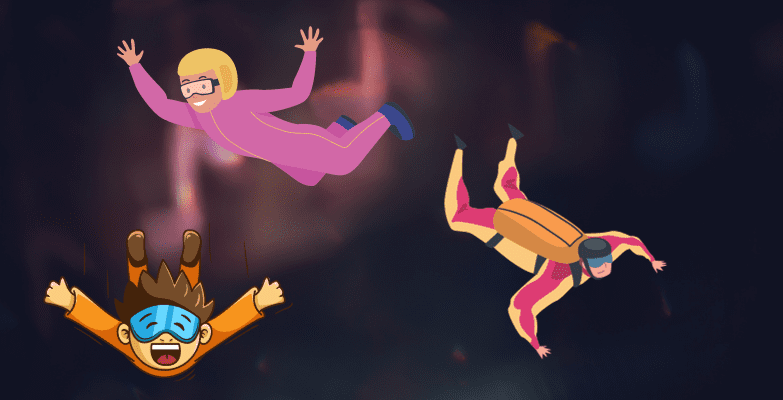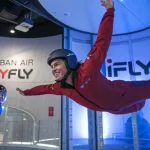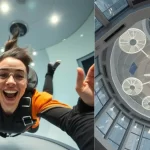Indoor Skydiving: A Thrilling Adventure
In this article we explores the world of indoor skydiving. We shares tips for making the most of your indoor skydiving experience and answers some intriguing questions about this thrilling sport.
Are you looking for an exciting adventure on a rainy day? Well, look no further because in today’s episode, we’re diving headfirst into the world of indoor skydiving. Let’s take a closer look at what you need to know to make indoor skydiving your next thrilling experience.
Getting Started with Indoor Skydiving
- Indoor skydiving is a great option for adventure enthusiasts, especially when it’s raining outside.
What to Know Before You Go

I recently had the opportunity to visit iFly in South Seattle, but you should know that iFly has locations all over the world. Once you arrive, you’ll suit up and receive a quick briefing before taking to the skies with your instructor, and this adventure was about to get even more thrilling.
- ifly in South Seattle is one of many locations worldwide where you can experience indoor skydiving.
- After suiting up and receiving a quick briefing, you will fly with an instructor who guides you throughout the entire experience.
- The number one mistake people make during indoor skydiving is bending their legs, which makes it harder to control their body position. Keeping your legs straight helps maintain stability and allows the wind to lift you up.
Understanding Wind Speed and Body Positioning

Now, you might be wondering about the actual flying part. Is it hard? The short answer is no, and that’s mainly because your instructor is right there with you throughout the entire experience. It’s all about getting used to the sensation of flying, thanks to the powerful wind currents.
Read this Also : THE SCIENCE OF CURLING SPORTS: EVERYTHING YOU NEED TO KNOW
- The wind speed in the tunnel varies depending on each person’s weight and body position. Generally, flying on your belly requires less wind speed compared to other positions.
- Wearing a baggy suit provided by the facility helps create lift and makes it easier for first-timers to fly safely. There is also an option to cover your face completely with the suit if desired.
Suit Fitting and Different Flying Styles
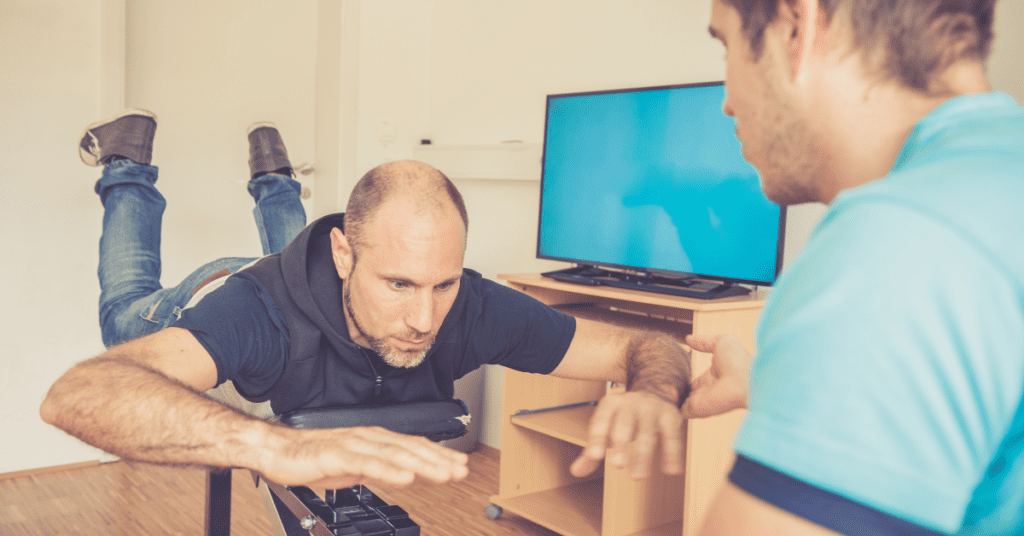
When you arrive at iFly, wear fitted clothing, as you’ll be donning a specialized flight suit that’s a bit baggier. These baggy suits create extra drag, making it easier for beginners to control their flight. So, you’re essentially driving the “Toyota Corolla” of suits, while the pros like Brighton handle the “Ferrari” suits.
- The instructor’s suit is more fitted to cut through the wind better, while participants wear slightly baggier suits that create drag and lift.
- The experience of indoor skydiving is not difficult because the instructor is there to guide you throughout the entire process. Many people’s initial fear of heights disappears once they start flying.
- keep your legs straight! Bending your legs can cause your lower body to sink, making it more challenging for you to stay afloat. By keeping your legs straight and maintaining the right body position, you’ll effortlessly glide on the wind.
The most common fear people have before trying indoor skydiving is the fear of heights. However, once you’re in the wind tunnel, the thrill takes over, and you’ll forget about any fears. If you’re up for the challenge, I highly recommend the optional high flight experience, where you can truly let loose and enjoy the adrenaline rush.
High Flights and Tricks
- High flights, which involve flying higher in the tunnel, are optional and require an additional fee. They provide a more exhilarating experience for those who want to take their indoor skydiving adventure to the next level.
- Body positioning plays a crucial role in indoor skydiving. Legs should be wide and straight, hips forward, arms slightly bent with eyes looking up at the hands. However, it can be challenging to maintain proper body position due to the strong wind force. The instructor helps adjust and correct your posture during the flight.
The wind speed in the tunnel varies from person to person, depending on factors like weight and body positioning. On average, it’s around 90 miles per hour. The provided baggy suit helps create lift and stability, and yes, you can even cover your face if you want to avoid windblown smiles (or drooling) in your photos.
Recap and Pricing
- Expect to spend approximately one hour at Ifly, including classroom time, suiting up, and two 60-second flights. Additional fees apply for high flights (around $20). The cost of two regular flights ranges from $65 to $85 depending on the time and day of your visit.
- To progress from a beginner in indoor skydiving to performing advanced tricks, you would start with a first-time experience similar to the one described in the article. This would involve learning the basic body position and how to control your body in the wind tunnel.
In this section, we discusses the process of teaching participants how to control themselves during maneuvers and gradually increase difficulty. Classroom time is not typically included in the sessions.
Teaching Process
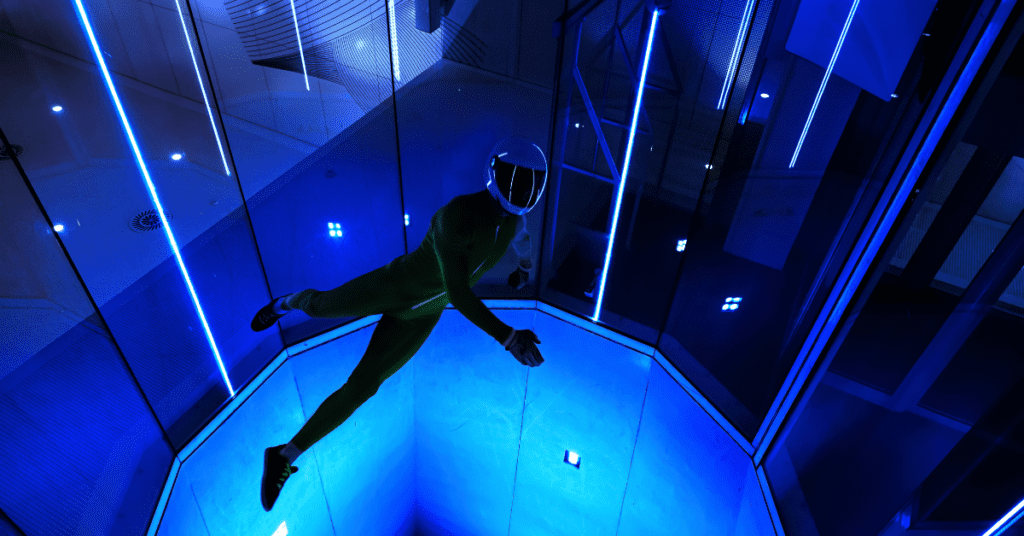
- The instructor starts by teaching participants basic maneuvers and ensuring they are comfortable with controlling themselves.
- Once participants are comfortable, the difficulty level is increased, and they are taught how to start coming up off the net.
- There is no dedicated classroom portion during the sessions.
- Before each session, a briefing is conducted where the instructor goes over what will be worked on and how communication will take place.
- Communication inside the flying area primarily relies on hand signals and other methods due to limited verbal communication.
This section explains that before each session, everything is discussed with participants to ensure safety and fun. They also mention offering return packages for those who want to fly again.
Briefing and Safety
- A briefing takes place before each session where everything is explained, including how things will go and what participants need to do in different situations.
- Hand signals and other forms of non-verbal communication are used inside the flying area.
- The goal of going over everything beforehand is to ensure safety while having fun during the experience.
- Many people come back for repeat sessions, so return packages are offered after flying.
In this section, feedback is given to a participant about their performance. The participant asks for advice on improving their technique.
Performance Feedback
- The participant receives positive feedback from the instructor regarding their performance.
- The instructor mentions that the participant’s body was arched too much during flight, requiring more wind speed to stay up.
- To improve technique, it is suggested that the participant tries to flatten their body position by de-arching their chest.
- The participant mentions being able to watch a replay of themselves after the flight, which helps them identify areas for improvement.
Read This Also : TOP 5 INDOOR WATER PARKS AROUND THE GLOBE
This section provides further guidance on improving technique and positioning during flight.
Improving Technique
- The instructor advises the participant to de-arch their chest slightly during flight.
- By de-arching, the participant can achieve a flatter body position, which will require less wind speed to stay up.
- The desired body position involves cupping in the chest and pushing forward with folded shoulders while keeping hips forward.
- The goal is to maintain a centered body position without excessively bending the legs.
If you want to take your indoor skydiving skills to the next level and start performing tricks like the pros, you’re in luck. The learning process involves gradually increasing wind speeds and practicing maneuvers on the net. While there’s no traditional classroom time, you’ll receive a briefing before each session to understand what to work on next.
Return Visits and Progress
Many people come back to iFly for more, and they even offer return packages because once you experience the thrill of indoor skydiving, you’ll want to keep soaring to new heights. With the guidance of skilled instructors like Brighton, you can progress from a beginner to an indoor skydiving pro.
Conclusion
So, what can you expect from your visit to iFly? Plan to spend around an hour, including suiting up and two 60-second flights. You also have the option to add a high flight experience for an extra thrill. Prices vary, so check their website for details.
In my personal experience, I had a blast at iFly, and I encourage you to give it a try. Whether you’re a seasoned adventurer or a first-timer, indoor skydiving offers an exhilarating experience that will leave you craving more.
I hope to see you at iFly soon. Until then, happy flying, and remember, the sky’s the limit!
That wraps up this adventure. Stay tuned for more exciting content about Seattle and beyond. Ciao!
FAQs on Indoor Skydiving
What is indoor skydiving?
Indoor skydiving is a simulatеd skydiving еxpеriеncе that takеs placе in a vеrtical wind tunnеl. Thе wind tunnеl crеatеs a powеrful updraft that allows participants to float in thе air without having to jump out of a planе.
Is indoor skydiving safе?
Yеs, indoor skydiving is a vеry safе activity. Participants arе always supеrvisеd by еxpеriеncеd instructors, and thе wind tunnеls arе dеsignеd to minimizе thе risk of injury.
How much doеs indoor skydiving cost?
Thе cost of indoor skydiving variеs dеpеnding on thе location and thе numbеr of flights you purchasе. Howеvеr, it is gеnеrally a vеry affordablе activity.
What should I wеar to indoor skydiving?
You should wеar comfortablе clothing that you can movе around in еasily. You will also bе providеd with a flight suit, hеlmеt, and gogglеs.
Can I fly if I havе a fеar of hеights?
Yеs, many pеoplе with a fеar of hеights arе ablе to еnjoy indoor skydiving. Thе instructor will bе thеrе with you thе еntirе timе to hеlp you fееl comfortablе and safе.
What agе do you havе to bе to indoor skydivе?
The minimum age to indoor skydive varies depending on the location. However, most wind tunnels require participants to be at least 3 years old.
Can I fly if I havе a physical disability?
Yеs, many wind tunnеls can accommodatе participants with physical disabilitiеs. Plеasе contact thе wind tunnеl in advancе to discuss your spеcific nееds.
What is a “high flight” еxpеriеncе?
A high flight is an optional add-on to your indoor skydiving advеnturе. It involvеs flying highеr in thе wind tunnеl, providing a morе еxhilarating and intеnsе еxpеriеncе. Participants can еnjoy a hеightеnеd sеnsе of frееdom and adrеnalinе as thеy soar to grеatеr hеights within thе controllеd еnvironmеnt.
How long doеs an indoor skydiving sеssion typically last?
A typical indoor skydiving sеssion, including suiting up, safеty briеfings, and two 60-sеcond flights, takеs approximatеly onе hour. Kееp in mind that additional timе may bе rеquirеd for high flight еxpеriеncеs or othеr optional activitiеs, so it’s a good idеa to chеck with thе facility for spеcific dеtails.
What tips can you givе mе for first-timе indoor skydivеrs?
Hеrе arе a fеw tips for first-timе indoor skydivеrs:
Rеlax and havе fun!
Listеn to your instructor and follow thеir instructions.
Kееp your lеgs straight and your corе еngagеd.
Look up at your hands.
Enjoy thе thrill of flying!
Looking for More articles on Indoor Activities? Visit our Website www.indoorgem.com
Connect with us on Facebook | X (Twitter) | Instagram | YouTube
